Frederic Tudor turned frozen ponds into cold cash – here’s the remarkable story of 'The Ice King'
Frederic Tudor’s plan to carve ice from ponds and ship it to warm-weather lands proved a stone-cold success, though it was first ridiculed. Tudor created a thriving American industry, improved medicine and changed tastes all the way to India.
Frederic Tudor put a chill in the global economy.
"The Ice King," as well as the entire world, profited in profound ways, with improvements to food, medicine, quality of life and international commerce.
Tudor was a young entrepreneur from Boston, Massachusetts. He hatched an audacious scheme in the early 1800s to harvest cold gold from the solid winter waters of New England.
He cut ice from ponds and shipped it first to Martinique, which he visited as a teen and was left intrigued by the lack of anything chilled.
His idea "was received with derision by the whole town as a ‘mad project,’" Tudor would later relate, according to the 1884 tome, "Captains of Industry: A Book for Young Americans" by James Parton.
Ridicule was followed by several failures, but also determination. Tudor made ice from within the United States a coveted commodity on distant docks and in palm-tree tropics.

Frederic Tudor, an entrepreneur from Boston, conceived a plan in 1805 to carve ice from New England ponds and ship it around the world. After initial ridicule, "The Ice King" succeeded in changing diets and improving medical care all over the globe. (Public Domain)
Paradise today was far less desirable before ice water, chilled food, cold compresses and icy cabana cocktails arrived with Tudor's trade.
"The idea of frozen water would have been as fanciful to the residents of Martinique as an iPhone," author Steven Johnson wrote in "How We Got to Now: Six Innovations That Made the Modern World."
"The idea was received with derision by the whole town as a ‘mad project."
Tudor carved from ice a thriving new American industry and a coveted international commodity.
It was a remarkable example of American exceptionalism, the ability of an individual to both envision and execute new economic opportunity.

Dozens of workers in West Cambridge — now Arlington, Massachusetts — cut ice from Spy Pond in February 1854. Ice was a major commodity in New England in the mid 19th century. (Photo by © CORBIS/Corbis via Getty Images)
"He was kind of an offbeat guy but also incredibly entrepreneurial and driven," Boston historian and writer Nancy Hayford Kueny told Fox News Digital.
"It’s fascinating, really. The waterfront here was once a thriving business sending ice halfway around the world."
Son of a proven patriot
Frederic Tudor was born in Boston on Sept. 4, 1783, to Delia Jarvis and William Tudor.
His father William "studied law in the office of John Adams, who became his lifelong friend, mentor and correspondent," according to the Massachusetts Historical Society.
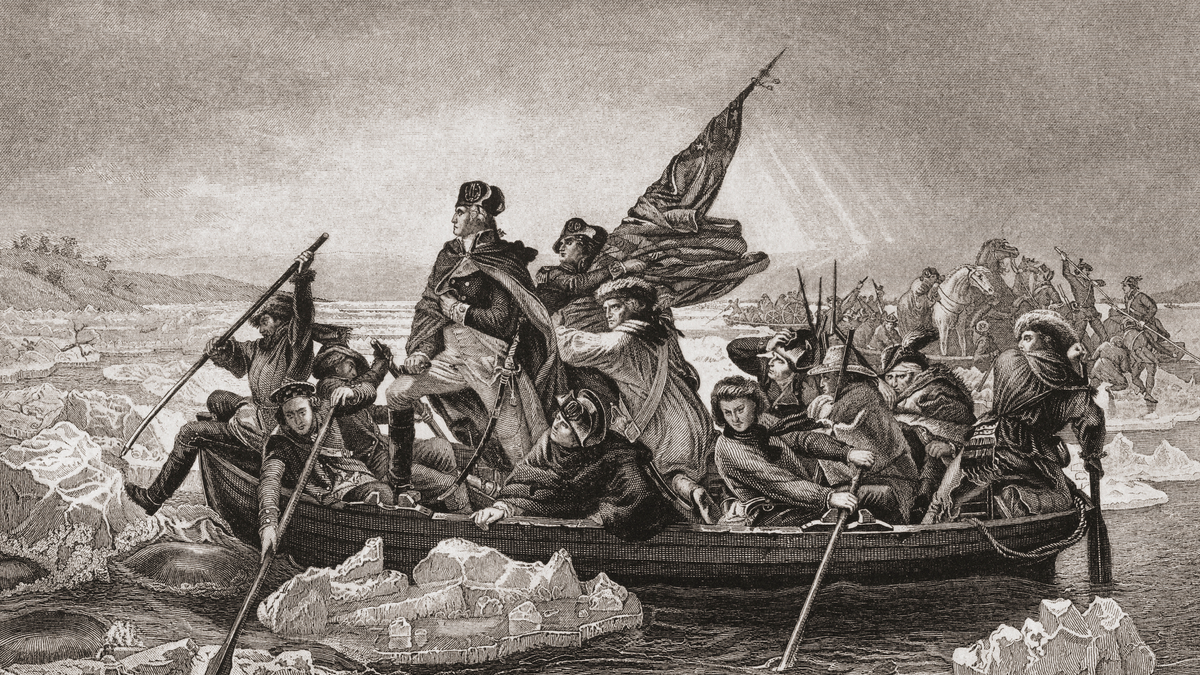
Washington crossing the Delaware, near Trenton, New Jersey, Christmas 1776. George Washington (1732-1799), first president of the United States. From English and Scottish History, published 1882. (Universal History Archive/Universal Images Group via Getty Images)
Gen. George Washington nominated "Billy" Tudor to be a judge advocate for the colonial army during the Siege of Boston in 1775.
Col. Tudor proved a patriot on the darkest day of the war.
"I cannot desert a man ... who has deserted everything to defend his country," Tudor wrote of the general to his future wife on Dec. 24, 1776, with the demoralized colonial army on the brink of collapse.
Washington led the daring raid across the Delaware River to overrun a Hessian garrison at Trenton, New Jersey, the next day, changing the course of the war and world history.
Judge Tudor's family enjoyed prestige after the war. Frederic Tudor's older brother, William, became an acclaimed author and founded the Boston Athenaeum.

John William Hill, American (1812–1879), "Rockland Lake - Cutting Ice." View from the northeast, lithograph in colors, by G. & W. Endicott. Made in United States, 19th century, works on paper-print. (Sepia Times/Universal Images Group via Getty Images)
Frederic eschewed study at Harvard to focus on business. He traveled to the Caribbean as a teenager, inspiring his frigid fantasy to make ice an industry.
He began cutting ice from ponds outside Boston and packed it onto the brig, Favorite. He sent his first shipment of Massachusetts-made cold gold to the Caribbean on Feb. 10, 1806.
"We hope this will not prove a slippery speculation."
"No joke. A vessel with a cargo of 80 tons of ice has cleared out from this port for Martinique," the Boston Gazette wrote mockingly nine days later.
"We hope this will not prove a slippery speculation."
Transcendental success
The critics appeared prophetic. Tudor's business was crippled by logistical problems and the War of 1812.
He was sent several times to debtors' prison.
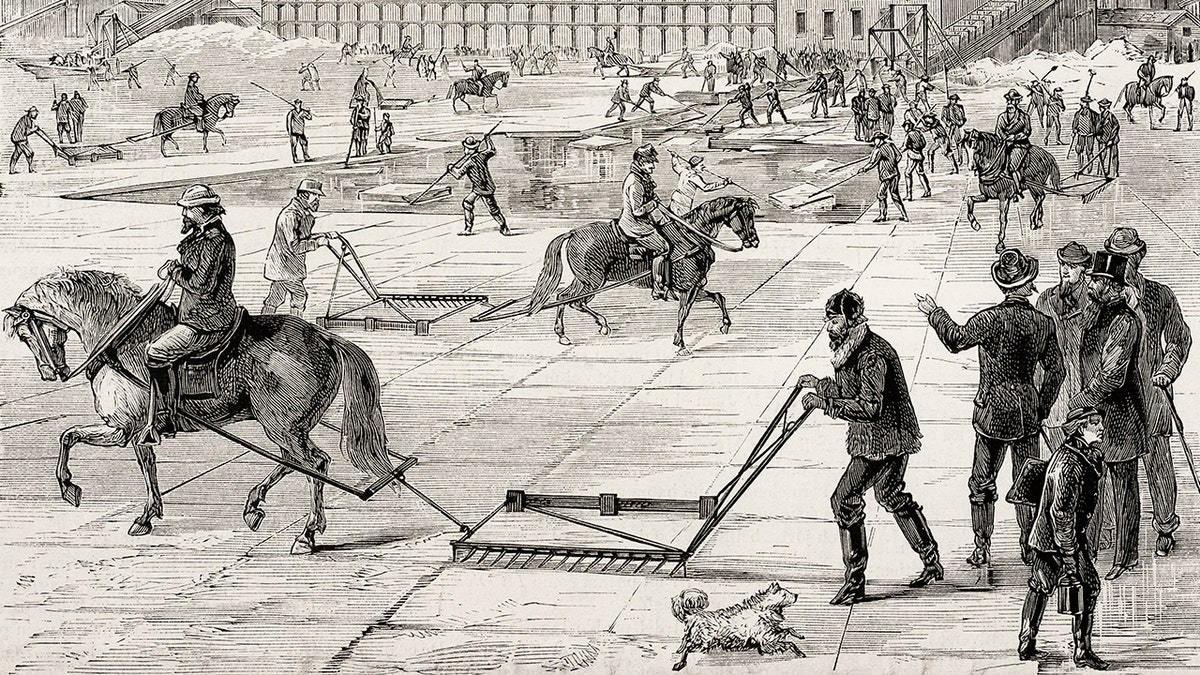
Cutting and harvesting of the ice on the Hudson River, New York, illustration from La Ilustracion Espanola y Americana magazine, Year 19, Number 4, Jan. 30, 1875. (Getty Images)
Tudor returned to the trade with a horse-drawn saw patented by partner Nathaniel Wyeth in 1825 that dramatically reduced the cost of cutting ice. He developed new ways to insulate ice on long voyages.
The Tudor Ice Co. expanded to Cuba and to sweltering American cities such as New Orleans, Louisiana. He supported growth by building ice houses at destination ports.
MEET THE AMERICAN WHO CREATED TIME ZONES, CHARLES F. DOWD, SCHOOLMASTER SET CLOCK FOR MANKIND
The ice harvest became a familiar site around New England — and then in other states.
"I saw from my window a hundred men at work like busy husbandmen, with teams and horses and apparently all the implements of farming," Henry David Thoreau wrote in "Walden" of a winter tableau in Concord, Massachusetts.
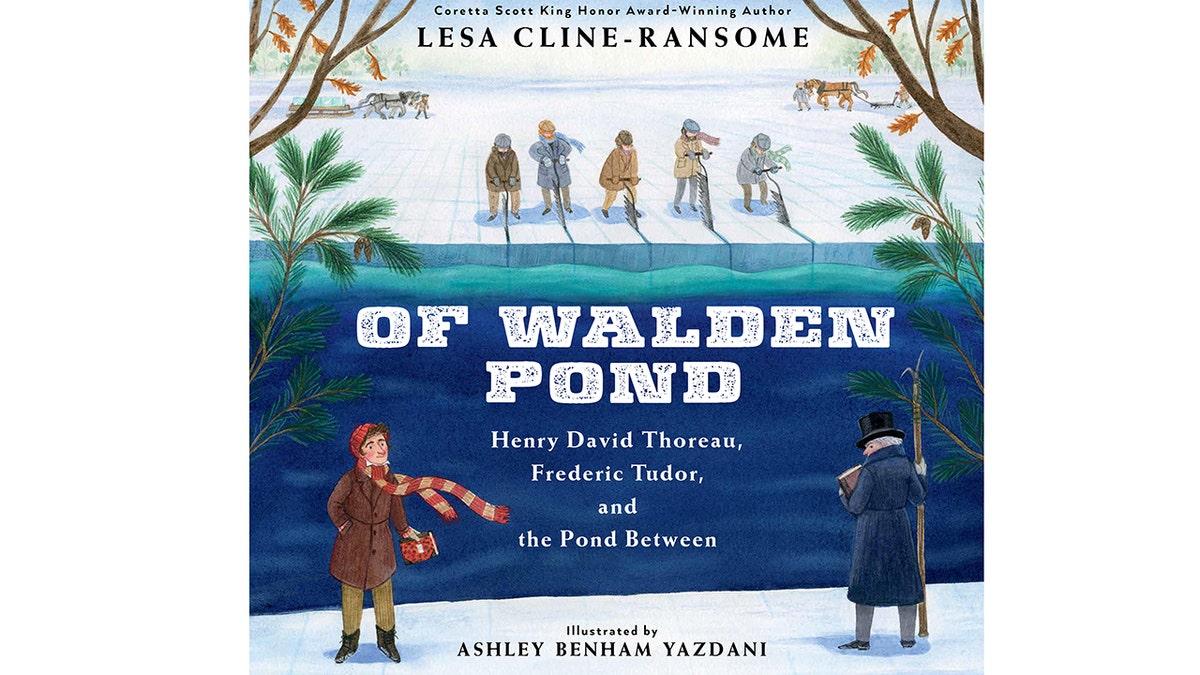
"Of Walden Pond: Henry David Thoreau, Frederic Tudor, and the Pond Between," by Lesa Cline-Ransome shares for children the story of the connection between transcendentalist author Thoreau and business titan Tudor, who harvested ice from Walden Pond to ship to India. Illustration by Ashley Benham Yazdani. (Courtesy Holiday House Books)
"Such a picture as we see on the first page of an almanac."
Lesa Cline-Ransome, author of the children's book, "Of Walden Pond: Henry David Thoreau, Frederic Tudor, and the Pond Between," told Fox News Digital, "Thoreau was initially upset because they were disturbing his peace."
The thoughtful transcendentalist soon became a fan of the ice-industry titan.
Oh! Calcutta!
Tudor took a spectacular risk, sending a ship packed with ice halfway around the world to India in 1833.
"The arrival of an ice ship at Calcutta is an exhilarating scene," Parton reported in "Captains of Industry."
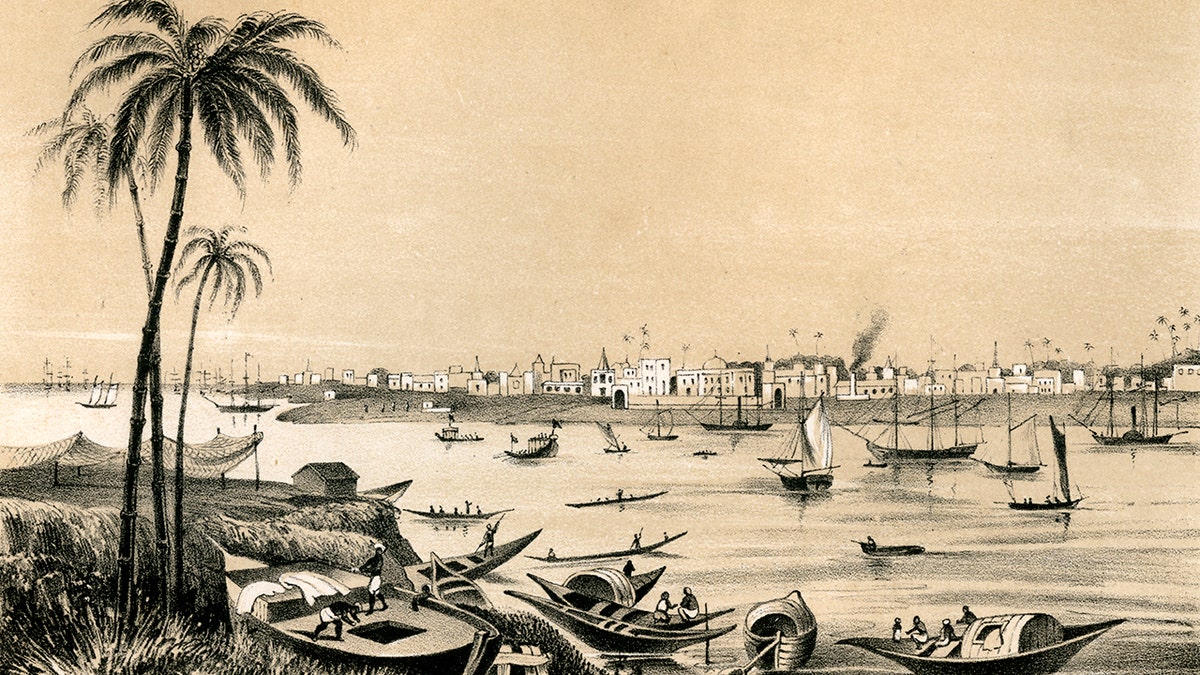
Calcutta, India, 1847. Illustration from "The History of China and India" by Miss Corner (Dean and Co, London, 1847). (The Print Collector/Print Collector/Getty Images)
Tudor's brig, Tuscany, left Boston on May 7 with 180 tons of ice. It arrived on Sept. 13, after crossing the equator twice, with 100 tons of ice to sell to the sweltering port city.
The durability of ice is one of the remarkable curiosities of the trade, a shock to anyone today who tries to keep their summer barbecue beer cold in a cooler for more than one day.
"The arrival of an ice ship at Calcutta is an exhilarating scene."
"The shipping it to the West Indies, a voyage of 10 or 15 days, little precaution is used," according to a period report that first appeared in the Journal of the Asiatic Society of Bengal.
"For the voyage to India," the publication added, "some additional precautions were deemed necessary."
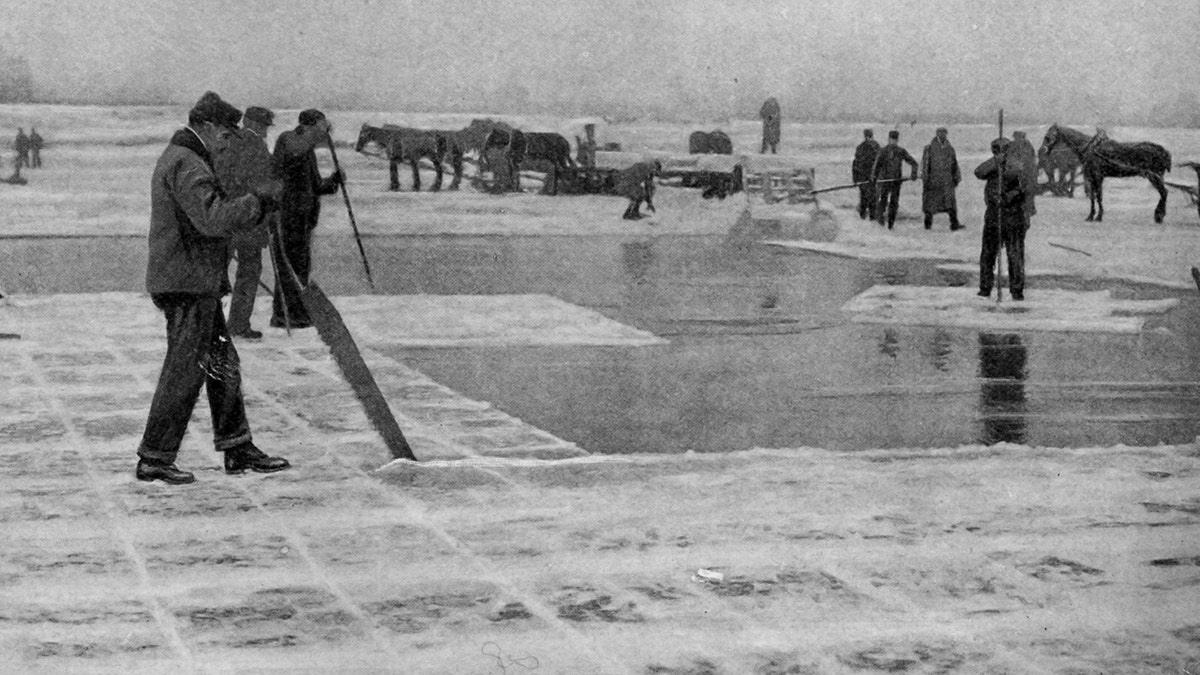
North America. Scene on an ice field in the United States during the process of cutting and carting an ice crop. 1920. (SeM/Universal Images Group via Getty Images)
Block ice was packed together tightly in a large wood-plank cargo box insulated with thick layers of scrap leather and hay.
The Calcutta venture proved highly profitable. Tudor's fortunes, and the ice industry, exploded in the years to follow.
MEET THE AMERICAN WHO INVENTED SLICED BREAD: OTTO ROHWEDDER, HARD-LUCK HAWKEYE
Thoreau, who found inspiration in Hindi texts, was spirited to learn the fate of ice carved from his beloved Walden Pond.
"In the morning I bathe my intellect in the stupendous and cosmogonal philosophy of the Bhagavad Gita," wrote Thoreau.

Henry David Thoreau (1817-1862), American author and naturalist who began his career as a schoolmaster and later authored his most famous and enduring work, "Walden, or a Life in the Woods" in 1854 — which was written at a isolated cabin on the shore of Walden Pond. He spent two years there reading and communing with nature. (Hulton Archive/Getty Images)
He then romanticized that "the pure Walden water is mingled with the sacred waters of the Ganges."
Mysterious fate of ‘the Ice King’
Frederic Tudor died at his Boston home on Feb. 6, 1864. He was 80 years old.
The young man ridiculed for his "mad project" lived to be an elderly man worth an estimated $200 million in today's dollars.

Frederic Tudor, an entrepreneur from Boston, achieved great wealth in the 19th century carving ice from New England ponds and shipping it around the world. He was worth nearly $200 million in today's dollars when he died in 1864. (Public Domain)
He was reportedly buried in a family tomb at King's Chapel cemetery in downtown Boston.
Some sources say his remains were moved to Mount Auburn Cemetery in Cambridge. His name does not appear at either location, local sleuths report.
The impact of his vision is no mystery.
CLICK HERE TO SIGN UP FOR OUR LIFESTYLE NEWSLETTER
Ice helped make hot-climate hospitals more bearable and helped treat various tropical ailments as well. Meat and produce traveled great distances via sail and rail, exposing people to new distant flavors.
Ice cream, iced tea and icy cocktails gained popularity around the world.
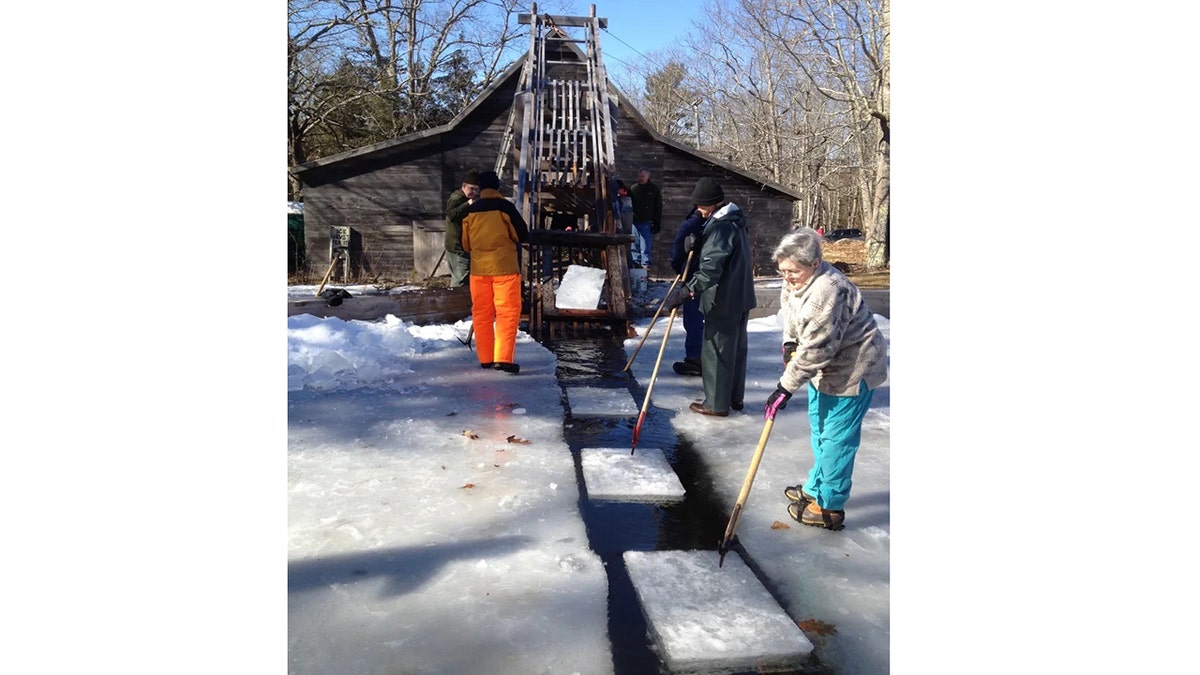
The Thompson Ice House Harvesting Museum in South Bristol, Maine, preserves traditions of the 19th-century New England ice industry, and hosts volunteer ice harvest each winter. (Kerry J. Byrne/Fox News Digital)
The ice trade's greatest disruption to global habits is that people around the world grew addicted to cold comforts on hot days.
New England, and other northern states, thrived due to the demand.
"In the early 1900s … the ice industry was actually more lucrative than the lumber industry in the state of Maine," Ken Johnson, president of the Thompson Ice House Harvesting Museum in South Bristol, Maine, said in an interview with Atlas Obscura.
The Thompson Ice House renews the ice harvest each winter. Local residents use period tools to turn a pond into block ice.
The 2024 ice harvest takes place on Feb. 18.

Frederic Tudor of Boston, Massachusetts, created the industry that shipped ice cut from ponds to warm-weather locations around the world. The Thompson Ice House Harvesting Museum in South Bristol, Maine (right), renews the local tradition each winter. (Public Domain; Kerry J. Byrne/Fox News Digital)
A sign for Tudor Wharf today marks the place on the Boston waterfront, a short distance from the USS Constitution, where American ice departed for distant lands.
The ice trade employed an estimated 90,000 men and 25,000 horses across the U.S. at its peak in the late 1800s.
CLICK HERE TO GET THE FOX NEWS APP
Its success spurred demand for manmade ice and artificial refrigeration. Both became a reality in the 20th century.
The ice trade faded from memory. Its impact still shapes tastes all over the world today.
"A man who has drank his drinks cold at the same expense for one week," Tudor once said, "can never be presented with them warm again."
For more Lifestyle articles, visit noticias.foxnews.com/lifestyle.





















